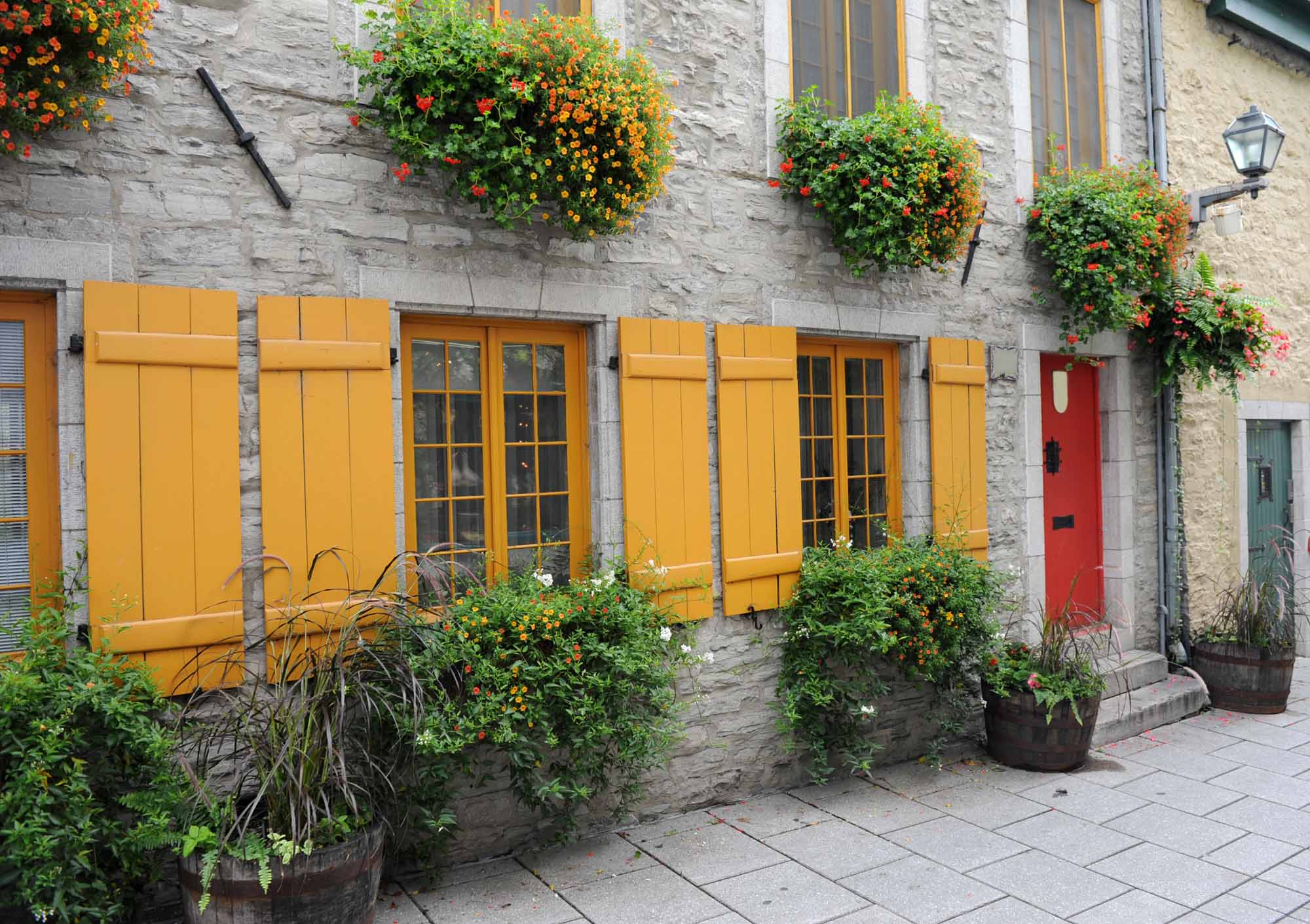Marguerite Bourgeoys, educator and saint (born 17 April 1620 in Troyes, France; died 12 January 1700 in Montreal, Quebec). One of the earliest French settlers in Montreal, Marguerite Bourgeoys established the Congrégation de Notre-Dame, a religious community for women that exists to the present day. She opened the first school in Montreal in 1658 and provided a temporary home and mentorship for the Filles du Roi, who arrived in New France between 1663 and 1673. Bourgeoys was canonized in 1982, becoming the first female Canadian saint in the Roman Catholic Church.
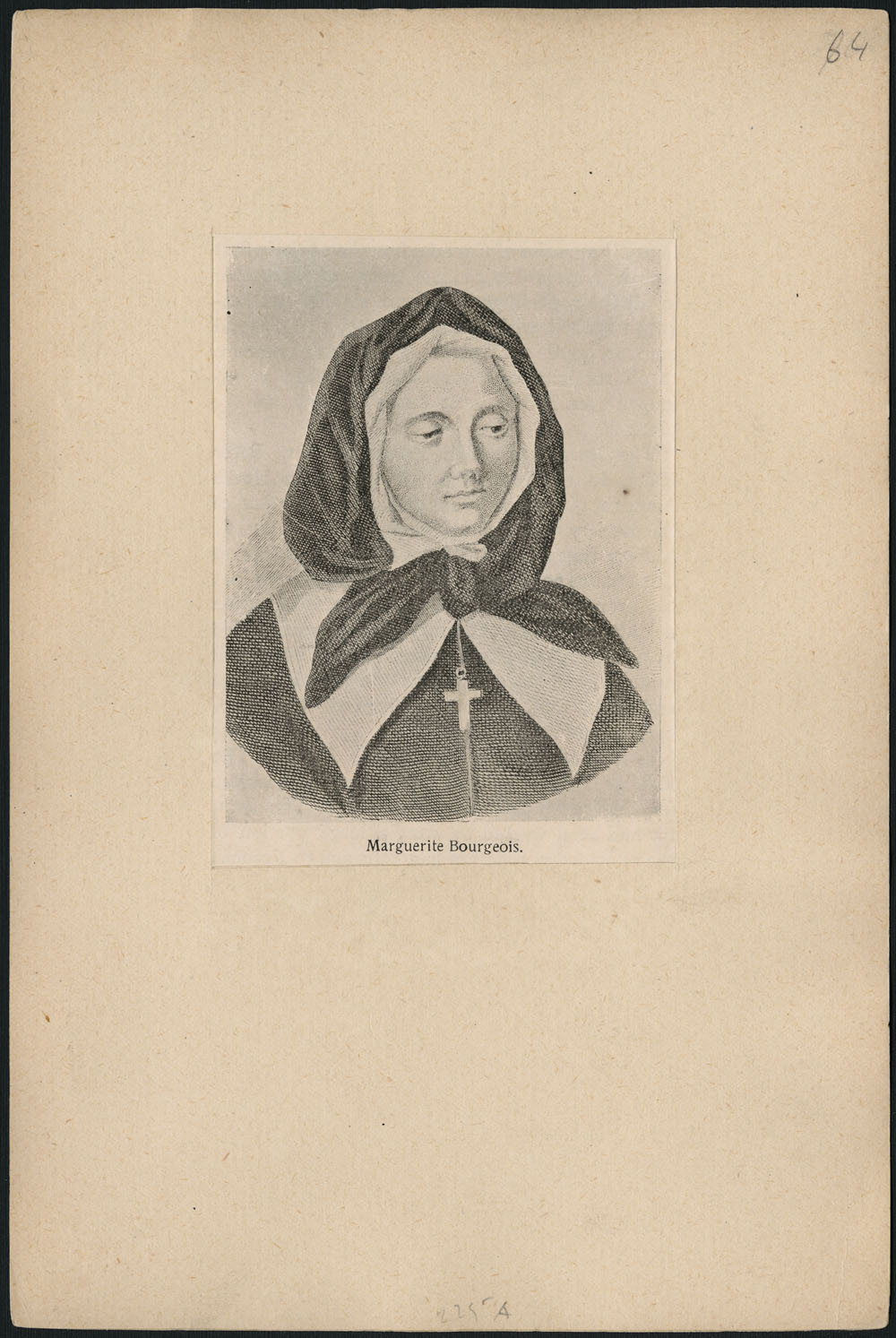
Early Life
Marguerite Bourgeoys was the sixth of 12 children of Abraham Bourgeoys, a master candle maker and coin maker at the mint in Troyes in the French region of Champagne. Her mother, Guillemette Garnier, was the daughter of a prominent textile manufacturer. Bourgeoys enjoyed a comfortable upbringing. Her first biographer and contemporary, Charles de Glandelet, described her as “light-hearted, joyful and kind.” She later wrote that when she experienced her spiritual awakening, “I gave up my pretty clothes.” According to her modern biographer, Patricia Simpson, Bourgeoys probably received some education from the Sisters of the Congrégation de Notre-Dame in Troyes.
Spiritual Awakening
In 1640, during a religious procession in Troyes, Marguerite Bourgeoys experienced a spiritual awakening. She later wrote, “We passed again in front of the portal of [the Abbey of] Notre-Dame, where there was a stone image [of the Virgin Mary] above the door. When I looked up and saw it, I thought it was very beautiful, and at the same time I found myself so touched and so changed that I no longer knew myself.” Bourgeoys joined the external congregation of the Congrégation de Notre-Dame in Troyes. In contrast to the cloistered nuns, the external congregation moved freely within the community, educating girls and helping the poor.
Bourgeoys’s religious experience was shaped by the French school of spirituality, which emerged from the Catholic Reformation (also known as the Counter-Reformation) and the example of female mystics such as the Spanish St. Teresa of Ávila. The French school of spirituality emphasized a personal relationship with God, mystical experiences and spreading religious teachings through education, missionary activities and spiritual writings.
Montreal
In 1653, Paul de Chomedey de Maisonneuve invited the then-33-year-old Marguerite Bourgeoys to travel to Ville-Marie (now Montreal) to establish a religious community and a school, which would provide a Roman Catholic education for French and Indigenous children. Like Bourgeoys, Maisonneuve was from the Champagne region of France. He wrote to the nurse and hospital administrator Jeanne Mance, who was also from Champagne, “Now let me tell you about an excellent woman I am bringing back with me called Marguerite Bourgeoys whose qualities are a treasure, which will be a powerful help in Montreal.”
Bourgeoys departed from France with Maisonneuve in February 1653 and arrived in Quebec City in September. She then continued to Montreal in November. Upon her arrival, she found that there were few school-age children. Only 150 French people lived in Montreal, 100 of whom had arrived at the same time as Bourgeoys and became known as “the colonists who saved Montreal.” There was also a high infant mortality rate.
During her early years in Montreal, Bourgeoys visited women in their homes and taught them to read and write. She also organized a work party to build the Notre-Dame-de-Bon-Secours Chapel, the first stone church constructed on the island of Montreal.
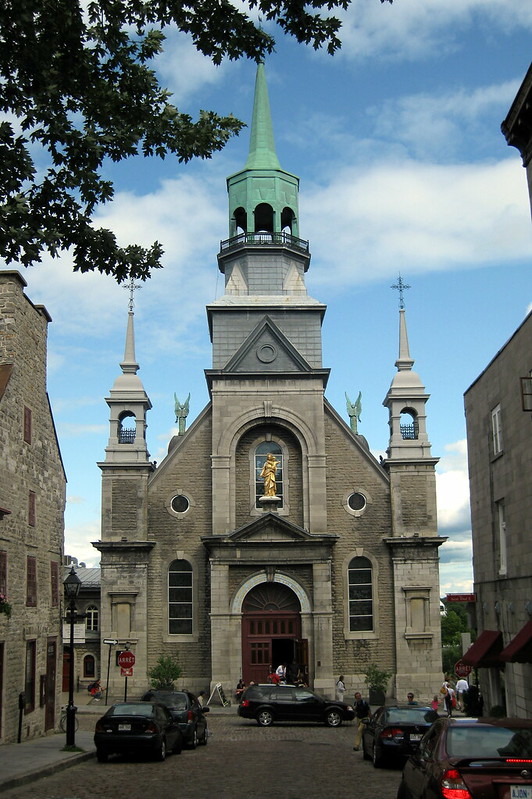
Founding of the Congrégation de Notre-Dame
Marguerite Bourgeoys returned to France with Jeanne Mance in 1658 to recruit young women for the Congrégation de Notre-Dame in Montreal. She envisioned a community of religious women who would provide education for girls and social assistance for colonists. In contrast to traditional nuns, the Sisters of the Congrégation de Notre-Dame would not be cloistered in a convent but would travel freely as teachers and missionaries. Bourgeoys recruited three women during her visit: Edmée Châtel, Marie Raisin and Anne Hiou. She later wrote, “I promised that we would have bread and soup and that we would work for our living.” The congregation took in sewing and laundry and managed a small farm to fund its religious, pastoral and educational activities in Montreal. In 1660, the congregation was inspected by the first Roman Catholic bishop of Canada and the first bishop of Quebec, François de Laval, who was impressed by the austere living conditions of the Sisters, whose income was spent on charity and education.
Education
On 30 April 1658, Maisonneuve provided Marguerite Bourgeoys with a stone stable to serve as the first schoolhouse in Montreal. The school provided free education in reading, writing, catechism and practical skills, such as needlework, to girls of all social backgrounds. As there were few children in Montreal at the time, the school taught boys and girls together until the mid-1660s, which was not the custom in France at the time.
The school welcomed Indigenous children, and Bourgeoys adopted an Iroquois (Haudenosaunee) baby in 1658, who was baptized as Marie-des-Neiges. Indigenous children were encouraged to speak their own languages, in addition to French and Latin, in the hope that they would spread Roman Catholic teachings to their parents and communities. Bourgeoys encouraged the Sisters of the congregation to acquire new knowledge and skills to become better teachers and to only use corporal punishment “very rarely, always with prudence and extreme moderation, it being remembered that one is in the presence of God.”
As the population of New France expanded in the 1670s, Bourgeoys founded additional schools in the communities of Lachine, Pointe-aux-Trembles (Montreal), Batiscan and Champlain and established a mission in the Indigenous village of Montagne. In 1676, Bourgeoys opened a boarding school to accommodate French and Indigenous girls who were sent to Montreal from various regions of New France for their education. In 1685, with the support of Bishop Laval’s successor, Bishop Jean-Baptiste de Saint-Vallier, Bourgeoys opened girls’ schools on the Île d’Orléans and in Quebec City.
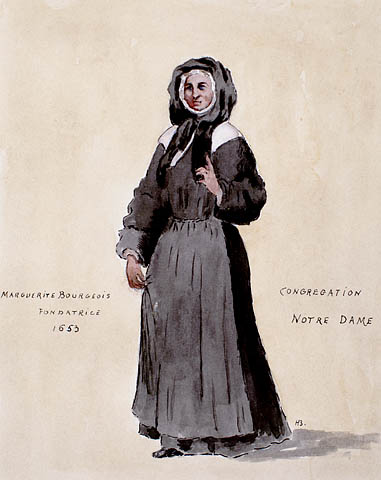
Filles du Roi
King Louis XIV of France made New France a royal province in 1663 and sponsored the emigration of around 800 young women, known as the Filles du Roi, to increase the French population of New France. Marguerite Bourgeoys met the Filles du Roi at the pier in Montreal, provided them with temporary lodgings and advice about their new lives as settlers and interviewed their prospective husbands regarding their economic prospects and intentions. In 1668, Bourgeoys purchased a farmhouse, Maison Saint-Gabriel, to provide a home for newly arrived Filles du Roi before their marriages.
Later Life
Marguerite Bourgeoys made two additional journeys to France in support of her religious community. In 1670, she was permitted an audience with King Louis XIV, who granted her a charter for the Congrégation de Notre-Dame. The charter would ensure its continued survival beyond her own lifetime. The King expressed his admiration for Bourgeoys’s accomplishments, particularly the free education for young girls and development of the land. Bourgeoys’s subsequent visit to France in 1680 was less successful, as Bishop Laval did not support her efforts to recruit new members to a non-cloistered community of religious women.
Bourgeoys retired from the leadership of the Congrégation de Notre-Dame in 1693 but remained active in the community. In 1698, at the age of 78, Bourgeoys wrote her memoirs. She devoted her final years to meditation and prayer and died in 1700 after a brief illness.
Legacy
The Congrégation de Notre-Dame continued to focus on education long after Marguerite Bourgeoys’s death, founding Marianopolis College (formerly Marguerite Bourgeoys College) in Westmount, Montreal, in 1908. As of 2025, there are 2,600 Sisters of the Congrégation de Notre-Dame in Canada, the United States, Latin America, Japan and Cameroon. Maison Saint-Gabriel Museum and Historic Site is a working farm operated by the Congrégation de Notre-Dame, as well as a museum devoted to the early settlement of Montreal.
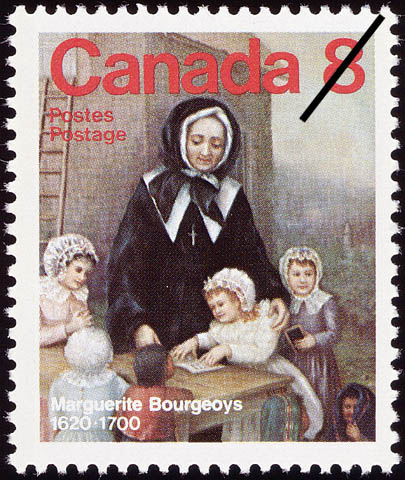
In 1975, Bourgeoys was featured on a Canada Post stamp designed by Jacques Roy, based on a painting by Elmina Lachance. There are Catholic schools across Canada named for Marguerite Bourgeoys, an Avenue Marguerite-Bourgeoys in Quebec City and a Place Marguerite-Bourgeoys Park in Montreal containing a statue — entitled Hommage à Marguerite Bourgeoys, by Jules Lasalle — that was unveiled in 1988. The Marguerite Bourgeoys Museum in Montreal showcases Bourgeoys’s accomplishments and legacy.
Sainthood
In 1878, Pope Leo XIII declared Marguerite Bourgeoys “Venerable” based on her spiritual writings and accomplishments. Pope Pius XII beatified Bourgeoys on 12 November 1950 following accounts of miraculous cures in Quebec and Vermont attributed to her intercession. On 31 October 1982, Bourgeoys was canonized as a saint by Pope John Paul II, becoming the first female Canadian Roman Catholic saint. At the time of her canonization, Prime Minister Pierre Trudeau and Quebec premier René Lévesque paid tribute to her accomplishments and religious faith.


 Share on Facebook
Share on Facebook Share on X
Share on X Share by Email
Share by Email Share on Google Classroom
Share on Google Classroom
